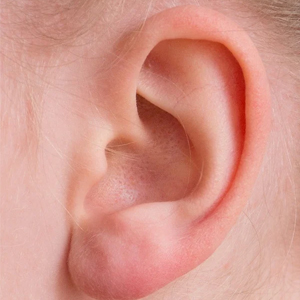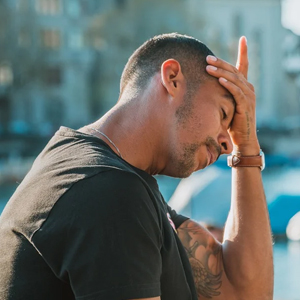Resolution of Otitis Media After Chiropractic Care
The Journal of Pediatric, Maternal & Family Health published the results of a case study on February 28, 2022, documenting the complete resolution of otitis media in a child receiving chiropractic care. Otitis media is an infection of the middle ear, and is more common in children.
 The
study begins by pointing out how common otitis media by
saying,
"...approximately 80% of children will experience at least
one episode of acute otitis media, AOM, before school age."
They report that globally there are 10.8 new episodes of
otitis media per 100 people each year.
The
study begins by pointing out how common otitis media by
saying,
"...approximately 80% of children will experience at least
one episode of acute otitis media, AOM, before school age."
They report that globally there are 10.8 new episodes of
otitis media per 100 people each year.
In this case, an 8-year-old girl suffering with right ear pain, sinus problems, and upper neck pain was brought to a chiropractor by her mother. The girl had been previously diagnosed with otitis media which she seemed to get with colds. In three previous occasions of ear aches, antibiotics were use to alleviate the situation.
A chiropractic examination was performed which focused on checking the girl's spine for subluxations. The examination revealed the presence of subluxations in multiple areas of her spine. Based upon these findings, chiropractic care was started to address the subluxations.
The girl was seen for chiropractic care on four consecutive days. By the third day, it was reported that her ear infection was completely gone. The study also reports that the girl's neck pain decreased, and neck range of motion had improved.
This study also reviewed a number of previous studies on chiropractic care and otitis media issues. In each of these cases, the results were consistent with the results of this study in that the patient recovered from the episode of otitis media. In one, hearing loss was restored, and in most cases, there were no further incidences of ear infections.
In the study conclusion the authors wrote, "There is some evidence that suggests chiropractic care is an effective technique for reducing the frequency and severity of recurrent otitis media in children as this case described the successful management and resolution in a young child undergoing chiropractic care."
 This
study attempted to see if there was a difference in outcomes
between chiropractic care alone verses a multidisciplinary
approach, which included chiropractic, in the care for patients
suffering with lower back pain. This study looked at two groups
of people suffering with either sub-acute or chronic lower back
pain. The care for each of these groups was only rendered for a
12-week period, but the results of that care were tracked for a
year after care began.
This
study attempted to see if there was a difference in outcomes
between chiropractic care alone verses a multidisciplinary
approach, which included chiropractic, in the care for patients
suffering with lower back pain. This study looked at two groups
of people suffering with either sub-acute or chronic lower back
pain. The care for each of these groups was only rendered for a
12-week period, but the results of that care were tracked for a
year after care began.  This
study reports that over 50% of patients with
neurofibromatosis develop bode deformities such as scoliosis
as well as difficulty in healing any bone fractures. Pain in
the spine and head area can also result from NF1. The study
authors begin by stating that "The purpose of this case
report is to present the results of a five-year conservative
management for neck pain, cervicogenic headache and spinal
deformity in a patient with NF1. Chiropractic intervention
may be a viable option for addressing musculoskeletal pain
and cervicogenic headache resulting from NF1."
This
study reports that over 50% of patients with
neurofibromatosis develop bode deformities such as scoliosis
as well as difficulty in healing any bone fractures. Pain in
the spine and head area can also result from NF1. The study
authors begin by stating that "The purpose of this case
report is to present the results of a five-year conservative
management for neck pain, cervicogenic headache and spinal
deformity in a patient with NF1. Chiropractic intervention
may be a viable option for addressing musculoskeletal pain
and cervicogenic headache resulting from NF1." This
study looks specifically at older adults who are on Medicare and
suffer from spinal pain. Prior studies looked at the opioid
usage in the general population and not specifically among
seniors who are more likely to be on multiple medications in
addition to any opioid use. The interactions of multiple
medications with opioids, coupled with other health issues that
seniors typically suffer from, add special concern to finding
out if chiropractic care could reduce the usage of opioids in
seniors.
This
study looks specifically at older adults who are on Medicare and
suffer from spinal pain. Prior studies looked at the opioid
usage in the general population and not specifically among
seniors who are more likely to be on multiple medications in
addition to any opioid use. The interactions of multiple
medications with opioids, coupled with other health issues that
seniors typically suffer from, add special concern to finding
out if chiropractic care could reduce the usage of opioids in
seniors.